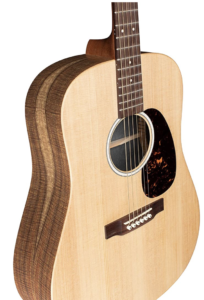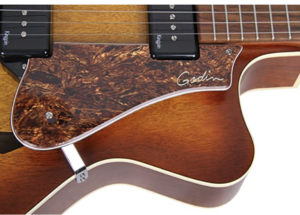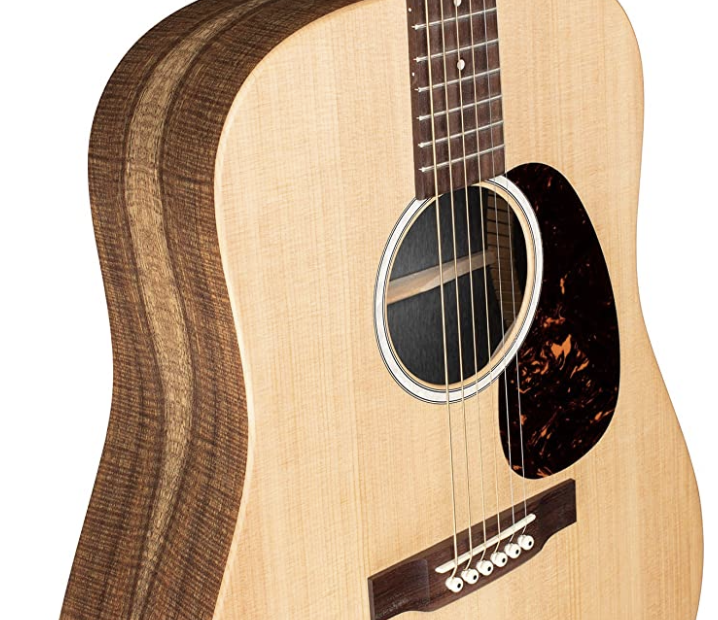 Sight reading for guitar is a valuable skill that allows you to play music on the spot, without prior practice or memorization. Here are some tips to help you improve your sight-reading abilities:
Sight reading for guitar is a valuable skill that allows you to play music on the spot, without prior practice or memorization. Here are some tips to help you improve your sight-reading abilities:
- Learn to Read Standard Notation: Familiarize yourself with the basics of standard music notation, including note symbols, rhythms, time signatures, key signatures, and other musical markings. Understanding the fundamentals of notation is crucial for effective sight reading.
- Practice Reading Music Regularly: Dedicate specific practice time to sight-reading exercises. Start with simple pieces or exercises and gradually progress to more complex music. It’s important to consistently challenge yourself and expose yourself to a variety of musical styles and genres.
- Take it Slow: When starting out, don’t be afraid to take it slow. Focus on accuracy and reading each note correctly. As you become more comfortable, you can gradually increase your reading speed.
- Break It Down: Break down the music into smaller sections or phrases. Sight reading is not about playing through an entire piece flawlessly on the first try. Instead, focus on smaller chunks of music, and work on them one at a time. This approach helps you manage the complexity of the music and improves your overall accuracy.
- Practice Rhythmic Exercises: Rhythm is a crucial element in sight reading. Practice rhythmic exercises separately to develop your rhythmic precision. Use a metronome to help you stay in time and gradually increase the tempo as you become more comfortable.
- Learn Common Guitar Patterns: Become familiar with common guitar patterns, such as scale shapes, arpeggios, and chord voicings. This knowledge allows you to recognize these patterns quickly when sight-reading, making it easier to navigate the music.
- Focus on Key Signatures: Pay attention to the key signature of the music. Understanding the key helps you anticipate the notes and chords that are likely to appear, making it easier to read and play.
- Use Fingerings and Position Markings: Incorporate fingerings and position markings into your sight-reading process. These markings help guide your hand placement and fingerings on the guitar neck, making it easier to execute the music accurately.
- Practice with Different Styles and Genres: Sight read music from various styles and genres to expand your musical vocabulary. Each style has its unique characteristics and challenges. By practicing diverse music, you enhance your ability to adapt to different musical contexts.
- Embrace Mistakes as Learning Opportunities: Sight reading can be challenging, and mistakes are bound to happen. Instead of getting discouraged, view mistakes as learning opportunities. Analyze the areas where you struggled and work on those specific aspects in your practice sessions.
- Sight Read with Others: Sight read with other musicians whenever possible. Playing in ensembles or with a teacher provides a real-life sight-reading experience and helps you develop your ability to follow and interact with other musicians in real-time.
- Record and Evaluate: Record yourself sight reading and evaluate your performance. Listen back to identify areas for improvement, such as rhythm, accuracy, or dynamics. Self-evaluation helps you become more aware of your strengths and weaknesses in sight reading.
Remember, sight reading is a skill that develops over time with consistent practice. Start with simpler pieces and gradually challenge yourself with more complex music. By incorporating regular sight-reading practice into your routine, you will gradually improve your ability to read music fluently and play it accurately on the guitar.
Why Sight Reading for Guitar is Difficult?
 Sight reading for guitar can be challenging for several reasons:
Sight reading for guitar can be challenging for several reasons:
- Multitasking: Guitarists need to simultaneously read and interpret multiple elements, including melody, rhythm, harmony, and fingerings. Unlike some other instruments, guitarists must read music written on multiple staffs, with different notes and rhythms occurring on different strings. This requires coordination between both hands and a strong understanding of the instrument’s layout.
- Unique Notation: Guitar notation can be complex and varied. Standard notation is often used, but guitarists also frequently encounter tablature (TAB) notation, which indicates where to place fingers on specific strings and frets. Guitarists must be proficient in reading both notations and quickly switch between them.
- Wide Range: The guitar has a wide range of notes, spanning several octaves. This means guitarists must be able to read and play notes across the entire fretboard, sometimes requiring quick position shifts. This adds an extra layer of complexity to sight reading, as guitarists must navigate the instrument effectively.
Difficulties with Chord Voicing
- Chord Voicings: In many styles of guitar playing, chords are played using various voicings and inversions. This means that guitarists often encounter different chord shapes and fretboard positions, making it necessary to read and interpret these chord voicings accurately.
- Complex Rhythms: Guitar music can feature intricate rhythmic patterns, syncopation, and complex time signatures. Guitarists must be able to quickly process and execute these rhythms accurately while reading the notation.
- Lack of Familiarity: Unlike pianists who typically have the notes laid out in front of them, guitarists often need to visualize the notes on the fretboard mentally. This requires a solid understanding of the instrument and the ability to quickly translate the written notes into their corresponding locations on the fretboard.
- Limited Sustain: The guitar’s natural sustain is relatively short compared to some other instruments. This means that guitarists must carefully time their note releases and be conscious of how the shorter sustain affects the overall musical phrasing and dynamics.
- Performance Anxiety: Sight reading in a performance setting can be intimidating, causing nervousness and potential errors. The pressure of playing in real-time and the fear of making mistakes can affect a guitarist’s ability to read and execute the music accurately.
Overcoming these challenges requires consistent practice, a strong foundation in music theory and notation, and developing a deep familiarity with the instrument. By dedicating time to sight reading exercises, focusing on specific areas of weakness, and gradually increasing the difficulty level of the music, guitarists can improve their sight reading skills and become more proficient at reading and playing music on the spot.
Getting Familiar With Music Notation
 Getting familiar with music notation is essential for any musician. Here are some steps you can take to become more comfortable with music notation:
Getting familiar with music notation is essential for any musician. Here are some steps you can take to become more comfortable with music notation:
- Learn the Basics: Start by learning the basic elements of music notation, including the staff, clefs, notes, rests, time signatures, key signatures, and dynamics. Understand how these symbols represent pitch, duration, and other musical aspects.
- Study Music Theory: Study music theory to understand the relationship between notes, scales, chords, and key signatures. This knowledge will help you interpret music notation more effectively.
- Practice Note Recognition: Practice recognizing and naming individual notes on the staff. Start with simple exercises and gradually progress to more complex music. Use flashcards, online resources, or music theory apps to reinforce your note recognition skills.
- Sight Reading Exercises: Incorporate regular sight reading exercises into your practice routine. Start with simple melodies or exercises and gradually work your way up to more complex pieces. Focus on accuracy and fluency as you read the music notation.
- Play from Sheet Music: Challenge yourself by playing music directly from sheet music. Start with easier pieces and gradually increase the difficulty level. This will help you develop the ability to read and interpret music notation in real-time.
- Analyze Notation in Music: Take the time to analyze the music notation in the pieces you play. Look for patterns, chord progressions, and rhythmic structures. This will deepen your understanding of how music notation relates to the sound and structure of the music.
- Use Music Notation Software: Experiment with music notation software, such as Sibelius or Finale. These programs allow you to create, edit, and play back music notation. Using such software can help you visualize and hear the music as you work with notation.
- Seek Guidance from a Teacher: Consider taking lessons with a qualified music teacher who can guide you through the process of learning music notation. They can provide personalized instruction, offer feedback, and help you develop your skills effectively.
- Join Ensembles: Participate in musical ensembles, such as bands, orchestras, or choirs, where you can read music notation as part of a group. This collaborative experience will enhance your ability to follow along with others and read notation in a real-world setting.
- Practice Regularly: Consistency is key when learning music notation. Set aside dedicated practice time to work on sight reading, play from sheet music, and analyze different pieces of music. The more you practice, the more familiar and comfortable you will become with music notation.
